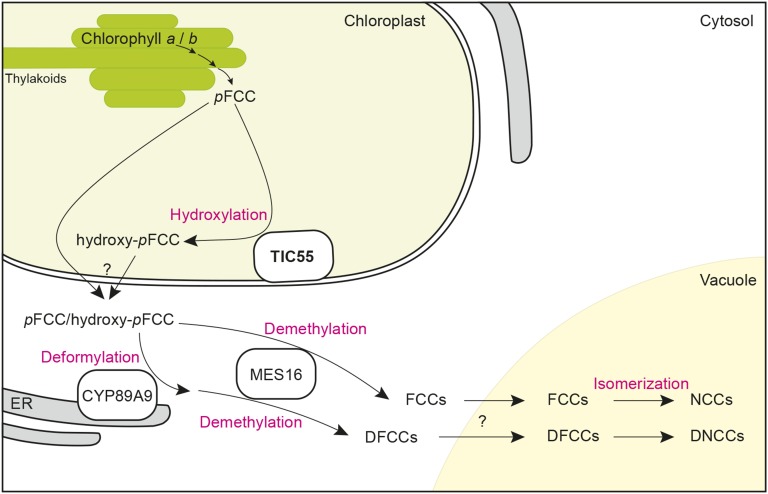Figure 9.
Topographical Model of the Chlorophyll Breakdown Pathway Integrating the Findings of This Work.
The model shows the subcellular localization of pFCC-modifying activities, i.e., CYP89A9 (deformylation), MES16 (demethylation), and TIC55 (hydroxylation). Note that all the reactions involved in converting chlorophyll to pFCC, including PAO the name-giving key enzyme of the PAO/phyllobilin pathway, are not shown but have been considered to form a highly dynamic complex at the thylakoid membrane to prevent release into the stroma of potentially phototoxic breakdown intermediates upstream of pFCC (Sakuraba et al., 2012). Note also that due to the fact that nonhydroxylated phyllobilin occur in wild-type Arabidopsis, a fraction of pFCC likely leaves the chloroplast without hydroxylation. As indicated by the question marks, the molecular identity of phyllobilin transporters at the chloroplast envelope and the tonoplast is unknown. DFCC, dioxobilin-type fluorescent chlorophyll catabolites; ER, endoplasmic reticulum; pFCC, primary fluorescent chlorophyll catabolite.

